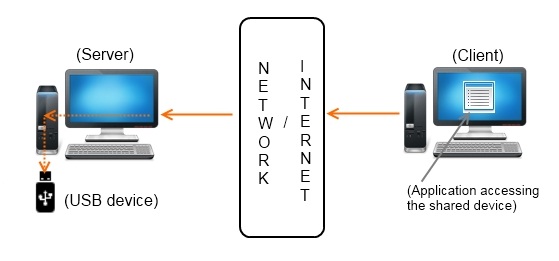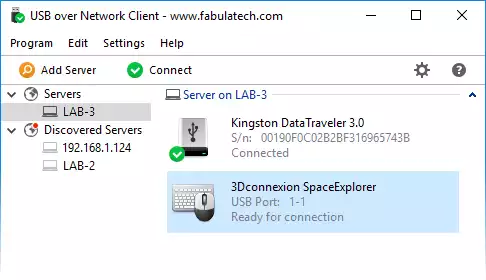In the current earth of connection and networked situations, sharing assets efficiently is crucial. Among the different methods to boost source operation, usb over ethernet software has appeared as a functional and innovative solution. This process allows customers to gain access to USB peripherals—such as models, scanners, and external drives—around a network as opposed to immediately joining them to individual computers. This short article offers a comprehensive overview of the style, benefits, and implementation of USB over ethernet software.

What's USB Device Sharing Over Ethernet?
USB product sharing over Ethernet involves joining USB peripherals to a network through a specialized device referred to as a USB-over-Ethernet machine or USB system hub. These servers act as intermediaries between USB products and the network. By pushing the USB unit in to the server and joining the host to the network via Ethernet, the device becomes accessible to any approved computer on the network. That setup helps numerous people to talk about and utilize the same USB peripherals remotely.
Critical Advantages
Centralized Administration: One of many primary features of sharing USB units over Ethernet is centralized management. Rather than handling multiple contacts across different pcs, administrators can control and keep USB units from an individual location. This centralization simplifies projects such as unit configuration, monitoring, and troubleshooting, streamlining IT operations.
Increased Availability: Networked USB sharing enhances availability by letting users to gain access to devices from any site within the network's range. For example, a printer attached to a networked USB host can be reached by people across various areas as well as buildings. This freedom removes the necessity for consumers to literally move or connect to a specific workstation to employ a distributed device.
Cost Savings: Sharing USB devices over Ethernet can lead to significant price savings. Businesses may reduce the number of bodily devices expected by allowing multiple consumers to talk about a single peripheral. Also, the decrease in cabling and electronics required for specific contacts more lowers costs. That cost efficiency is very good for large companies with considerable peripheral needs.
Enhanced Protection: Network-based USB sharing could offer greater safety in comparison to strong connections. By utilizing system safety methods such as authentication and encryption, administrators can get a grip on usage of shared units and defend sensitive and painful data. This managed entry aids in preventing unauthorized use and potential data breaches, causing a better research environment.
Scalability and Flexibility: The scalability of USB product sharing over Ethernet causes it to be an flexible option for growing organizations. New devices can be simply added to the system, and additional users could be awarded access without significant electronics changes. This flexibility is needed for companies that need to adjust their technology infrastructure frequently.
Simplified Troubleshooting: Troubleshooting network-connected USB units is usually more easy than working with direct connections. IT support teams may remotely identify and handle dilemmas, reducing the need for on-site visits. That remote troubleshooting capability assists reduce downtime and improves overall efficiency.

Implementation Criteria
To implement USB device discussing over Ethernet, businesses require to select appropriate USB-over-Ethernet hosts or hubs compatible making use of their devices. It is important to make sure that the network infrastructure helps the additional traffic and that safety steps come in position to guard data. Moreover, individual entry controls should be configured to control who is able to hook up to the discussed devices.
Realization
Discussing USB units around Ethernet presents numerous advantages, including centralized administration, improved accessibility, charge savings, improved protection, scalability, and simplified troubleshooting. By leveraging this method, businesses can improve their resource usage and increase working efficiency. As engineering remains to advance, discussing USB units around Ethernet stands out as a forward-thinking option for contemporary network needs.
